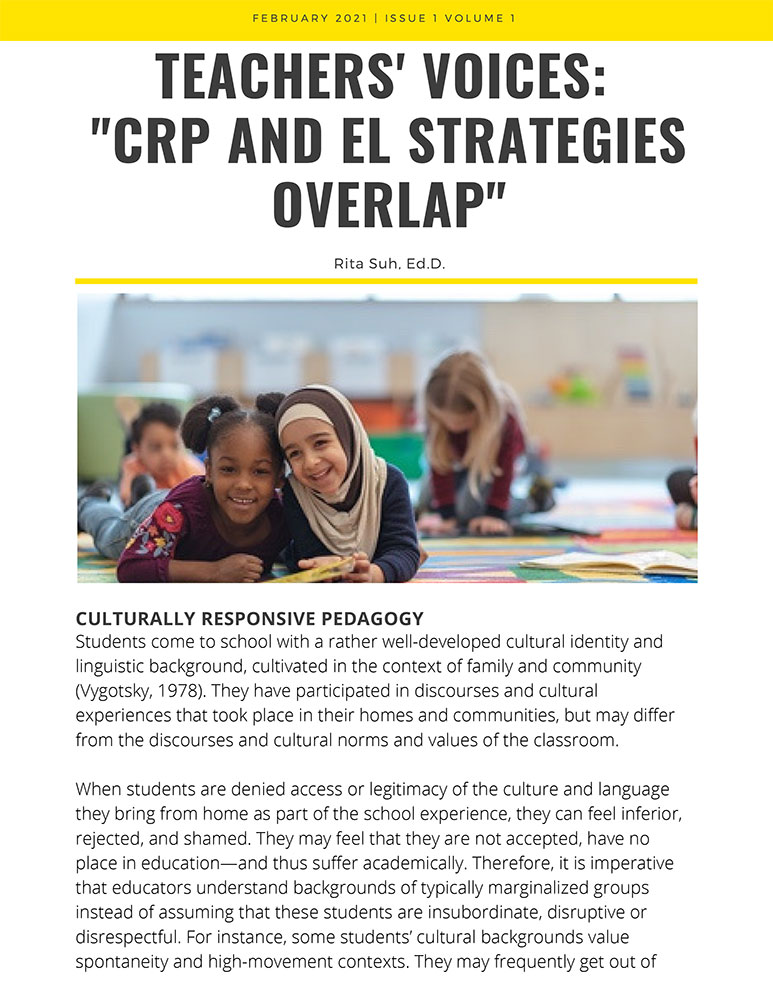By Rita Suh, Ed.D., Co-Director of the Culture & Equity Project
Culture & Equity Project Blog
CULTURALLY RESPONSIVE PEDAGOGY
Students come to school with a rather well-developed cultural identity and linguistic background, cultivated in the context of family and community (Vygotsky, 1978). They have participated in discourses and cultural experiences that took place in their homes and communities, but may differ from the discourses and cultural norms and values of the classroom.
When students are denied access or legitimacy of the culture and language they bring from home as part of the school experience, they can feel inferior, rejected, and shamed. They may feel that they are not accepted, have no place in education—and thus suffer academically. Therefore, it is imperative that educators understand backgrounds of typically marginalized groups instead of assuming that these students are insubordinate, disruptive or disrespectful. For instance, some students’ cultural backgrounds value spontaneity and high-movement contexts. They may frequently get out of their seats or ask a question or respond without raising their hands. Teachers who value prompting and low-movement contexts typically discipline students who display spontaneity and “unnecessary” movements because it is viewed as disruptive behavior.Another example to highlight is conversational patterns. Some cultures’ conversational patterns include verbal overlapping, where one can talk over or interrupt someone whois talking. This is viewed as a sign of engagement in the conversation. However, the traditional school culture values linear verbal communication, in which only one person talks at a time. Students who verbally overlap teachers, administrators, and other students can be misunderstood as being rude, disrespectful or combative.
Culturally responsive pedagogy (CRP) creates equity for students whose culture and language is different from that of the school’s. It centers students’ culture, prior knowledge and experiences, frames of references, performance styles, and home languages (Gay, 2000). Instead of judging students or expecting that they need to drop their culture and language and adopt the school’s cultural expectations andStandardized Academic English, educators must center students’ backgrounds, experiences and frames of reference.

